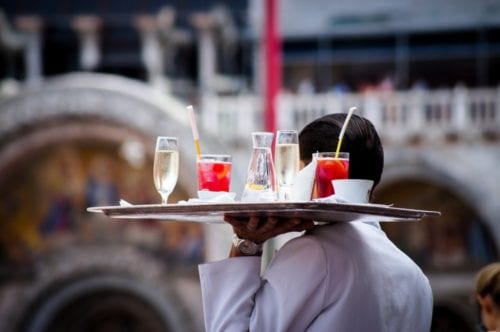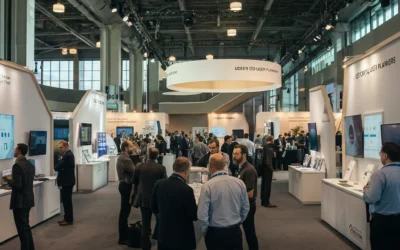An incentive trip is more than just a reward—it’s a powerful tool for boosting team morale, fostering connections, and driving exceptional performance. These trips provide employees with an opportunity to relax, bond, and experience something extraordinary, leaving a lasting impression while advancing your company’s goals.
Planning the perfect incentive trip might seem daunting, but with the right approach, it can become an incredibly rewarding experience for everyone involved. Whether you’re an event manager, sales leader, or HR professional, this guide will walk you through every step to create a memorable and impactful incentive trip.
Setting Clear Goals
Every successful incentive trip starts with a clearly defined purpose. Why are you planning this trip, and what do you want to achieve? Setting measurable goals ensures that the incentive aligns with your organization’s objectives.
Here’s how to establish those goals:
- Reward and Motivate: Recognize top-performing employees for exceeding targets. For instance, “Increase Q4 sales revenue by 25% and reward the top 10 performers with an exclusive retreat.”
- Foster Team Connections: Use the trip to strengthen team relationships. For example, “Enhance inter-departmental collaboration by hosting team-building activities.”
- Promote Loyalty: Inspire continued excellence. An incentive trip to a bucket-list destination can remind employees of how valued they are.
By identifying your goal, you’ll shape the trip’s design, itinerary, and overall experience to fit those objectives.
Budgeting for Success
A well-planned budget lays the foundation for a seamless trip. Striking a balance between cost-efficiency and quality—without sacrificing fun—is key.
Key Budget Considerations:
- Travel: Flights, trains, shuttles, and any additional transportation costs.
- Accommodation: Hotel rooms, resorts, or unique stays like villas or boutique lodgings.
- Meals and Activities: Group dinners, excursions, team-building exercises, and entertainment.
- Incidentals: Taxes, insurance, and emergency funds.
Pro Tip: Start planning early. Securing flights and accommodations in advance typically offers better rates. Using tools like event budget templates can help you allocate funds more effectively.
Choosing the Perfect Destination and Dates
Your destination sets the tone for the entire trip. It should align with your goals, the group demographic, and your budget.
Consider These Factors:
- Seasonality and Timing: A ski retreat in the winter or tropical beaches in the spring? Match the destination to the season.
- Employee Preferences: Survey attendees to gauge interests. Do they prefer relaxation, adventure, or a mix of both?
- Accessibility: Minimize travel fatigue by opting for easily reachable locations, especially for shorter trips.
Popular Incentive Trip Destinations:
- For Relaxation: Maui, French Riviera, or Costa Rica.
- For Adventure: Iceland, Patagonia, or a Safari in South Africa.
- Unique Experiences: Explore the vibrant culture of Kyoto, Japan, or the architectural charm of Santorini, Greece.
Don’t forget to consider timing! Avoid major work crunch periods or holidays that might clash with personal obligations.
Curating an Exceptional Itinerary
An itinerary is the backbone of the trip. A successful schedule ensures employees enjoy the perfect mix of relaxation, adventure, and connection.
Tips for Crafting the Perfect Itinerary:
- Customization is Key: Cater the experience to your employees. An outdoor enthusiast might enjoy kayaking tours, while others may prefer spa days or wine tastings.
- Balance Activities: Plan team-building exercises in the morning, followed by free time for personal exploration or rest.
- Create Unique Experiences: Think hot air balloon rides in Cappadocia, a private beach dinner in Bali, or a behind-the-scenes tour of Napa Valley wineries.
Pro Tip: Include surprise elements, like a themed dinner or exclusive gifts, to elevate the experience.
Coordinating Logistics and Travel
Logistics can make or break a trip. Smooth coordination ensures your participants can focus on enjoying the experience, not worrying about the details.
Essential Logistics to Cover:
- Travel Arrangements: Book group reservations for flights and transportation, taking individual schedules into account.
- Accommodations: Pick spots with excellent guest services. Bonus points if they offer activities or amenities such as spas, gyms, or meeting rooms.
- Necessary Documents: Ensure everyone has the documents required for travel, especially for international destinations (e.g., passports, visas).
Streamlining logistics removes potential headaches and creates a hassle-free experience for all attendees.
Building Excitement & Engagement
Employee engagement often starts long before the trip begins. Clear, enthusiastic communication sets the stage for a positive and inclusive experience.
Pre-Trip Engagement Strategies:
- Announce with Impact: Share destination hints or release a teaser video to build anticipation.
- Interactive Invitations: Send personalized invites featuring the theme or destination. For example, sunglasses for beach trips or a travel diary for adventure destinations.
- Countdown Communications: Use emails or a shared event app to keep everyone informed about itineraries and updates.
On-Site Engagement: During the trip, offer small touchpoints such as welcome gifts, organized networking events, and photo opportunities with professional photographers to document their experience.

Measuring Success
Planning an incentive trip involves considerable effort, so measuring its success is crucial to understanding its impact and justifying similar efforts in the future.
Metrics to Consider:
- Employee Feedback: Distribute post-trip surveys to capture positive experiences and constructive criticism.
- Goal Achievement: Did the trip lead to boosted sales, morale, or collaboration as intended?
- Retention Rates: Look for long-term impacts, such as increased loyalty and motivation.
An efficient way to measure the trip’s success is pairing tangible metrics with anecdotal feedback to adapt and improve for future incentives.
Add Unique Personal Touches
Taking your trip to the next level requires thoughtful and personalized details. A themed trip or original attendee gifts can make a huge difference.
Ideas to Make It Special:
- Themes: Align the trip’s theme with company values or goals, such as “Limitless Adventures” for exceeding annual targets.
- Memorable Keepsakes: Popular gifts include custom luggage tags, local artisan products, or curated welcome baskets.
These small gestures create larger-than-life memories, ensuring employees feel truly appreciated.

Transform Your Incentive Trip into a Lasting Motivational Tool
When done right, an incentive trip is more than a reward—it’s an immersive experience that fosters loyalty, builds camaraderie, and inspires your team to achieve even greater heights. From defining clear goals to personalizing the experience, a meticulously planned trip ensures both employees and the company gain value.
If organizing an incentive trip feels overwhelming, don’t sweat it. Partner with a professional event planning team or tools designed to streamline the process so you can focus on bringing your team closer together.
Your next unforgettable incentive trip starts with clear goals, thoughtful preparation, and a spark of creativity.
You might also like…
Event Registration Software & Corporate Event Registration Solutions That Transform the Attendee Experience
The Most Reliable Event Registration Software for Corporate Conferences, Trade Shows, &...
Corporate Event Registration Solutions: Onsite Tools, Support, and Strategies Every Planner Needs
Corporate event planners face increased pressure to deliver flawless attendee experiences. Whether...
How to Plan a Successful User Conference: A Full Guide to Conference Planning and Management
1) Start with hypotheses — treat the event like an experiment Stop thinking “attendance” as your...





